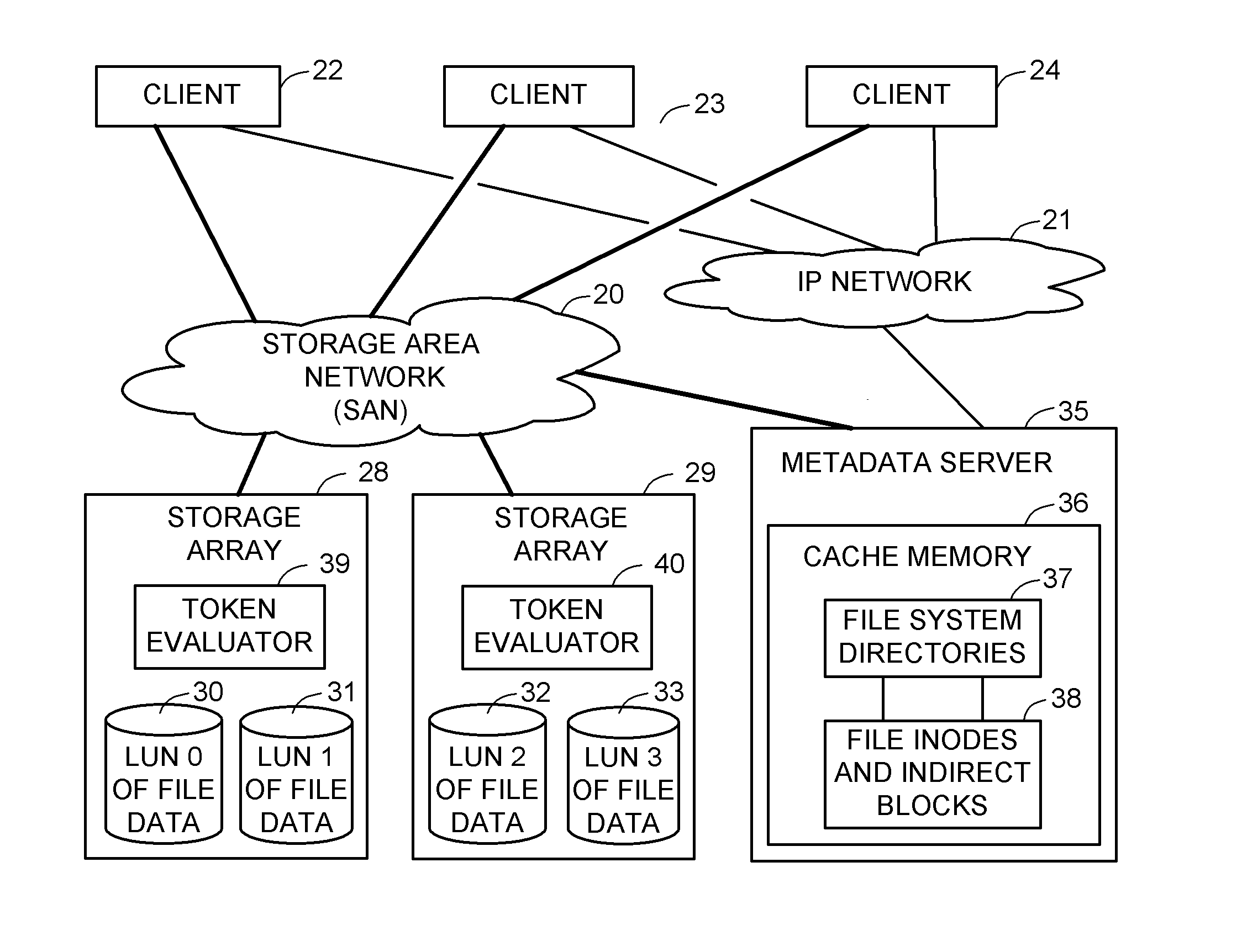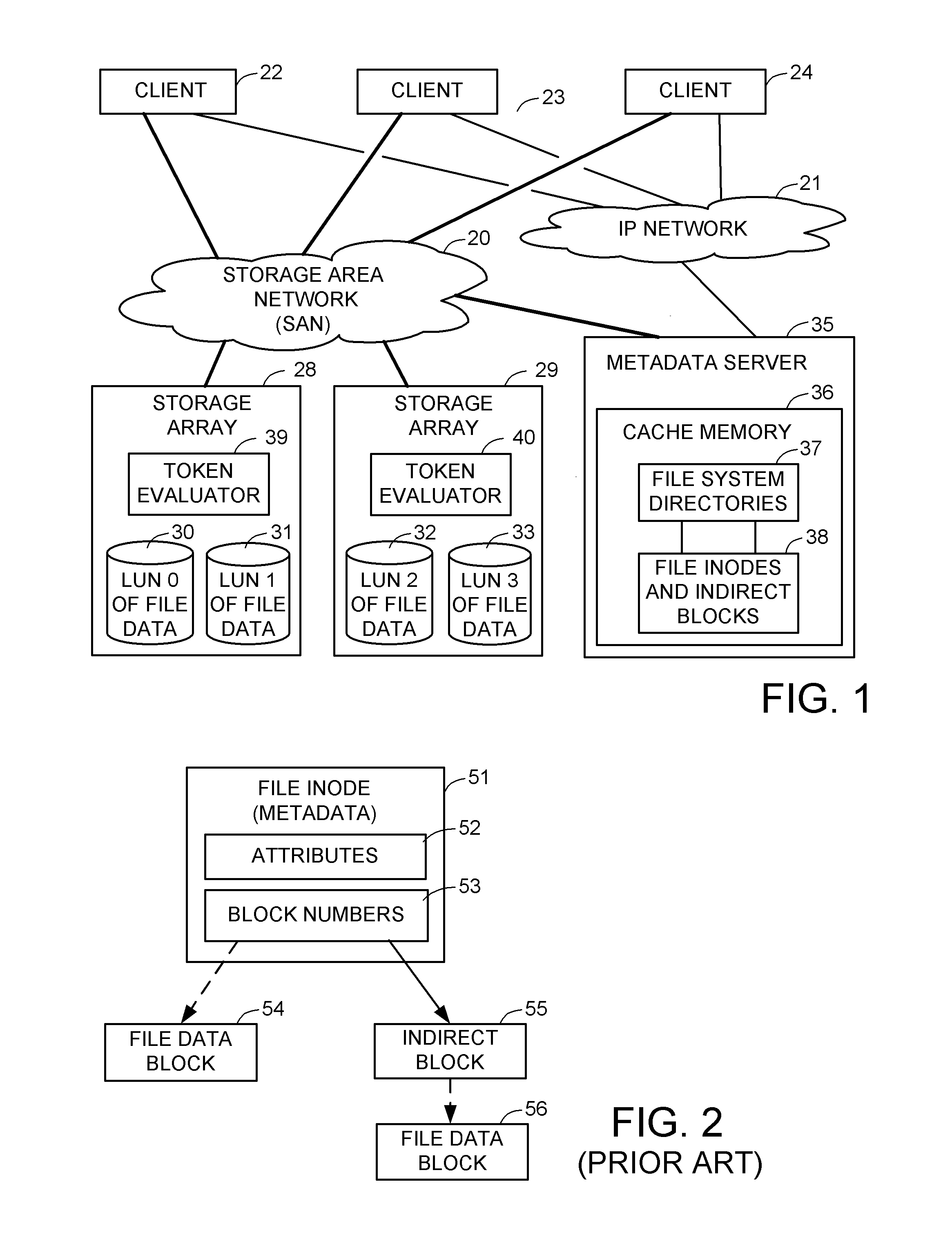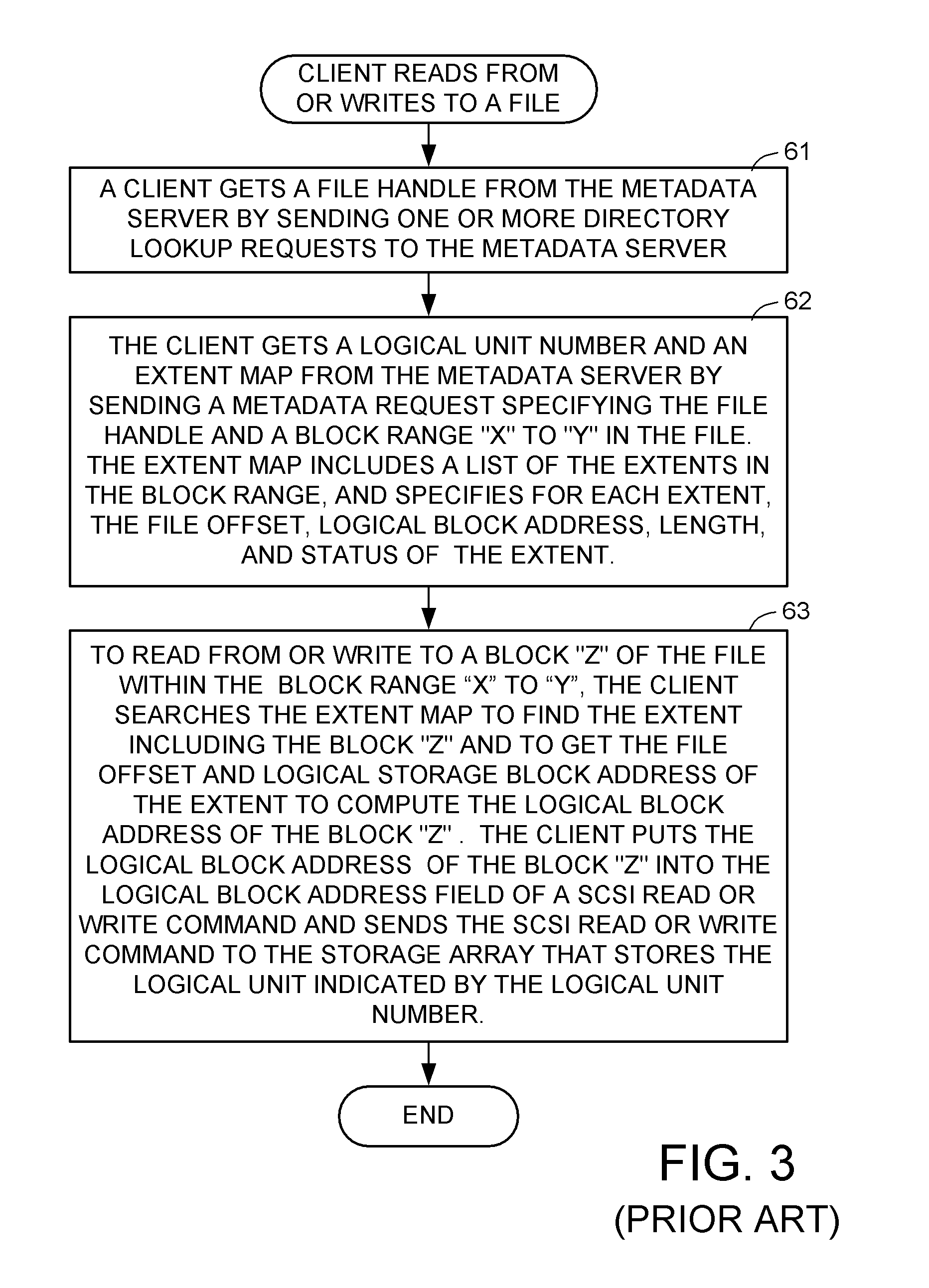Access control to block storage devices for a shared disk based file system
a file system and access control technology, applied in the field of data access control for a shared disk based file system, can solve the problems of server not being able to prevent, security problems, corrupting the file system, etc., and achieve the effect of improving the security of client access
- Summary
- Abstract
- Description
- Claims
- Application Information
AI Technical Summary
Benefits of technology
Problems solved by technology
Method used
Image
Examples
first embodiment
[0055]In view of these considerations, a number of specific ways will be described for creating and evaluating the tokens in the SCSI read and write commands. First will be described networks in which each SCSI read or write command includes both a logical block address (LBA) and a token. The storage array evaluates the LBA in the context of the token to decide if the read or write is permitted. In a first embodiment, the token is created by the client so that no change is needed to existing metadata server software and no direct communication is needed between the metadata server and the storage array. In other embodiments, the token is created by the metadata server so that no change is needed to existing client software.
[0056]FIG. 6 shows a first embodiment in which the token is a function or hash 81 of the LBA, a bit indicating whether the SCSI command is a read or a write command, and a key unique to the client. For example, the LBA is a four-byte number for addressing a logica...
fourth embodiment
[0083]FIG. 13 shows a logical-to-virtual address mapping for FIG. 9. In this example, the mapping for a first one of the clients (CLIENT_0) is the same as in FIG. 12 in which each file system data block is reported to the client as a separate extent, but the mapping for a second one of the clients (CLIENT_1) includes a dynamically allocated pseudo-random virtual block address for each extent. Thus, the extents reported to the second client may include extents of different lengths. In FIG. 13, for example, the extents in the virtual address space 123 accessed by the second client (CLIENT_1) include the same extent lengths as the extents of the file in the logical address space 121, and each extent in the virtual address space 123 accessed by the second client includes the same file system data blocks in the same order as they appear in the logical address space 121.
[0084]FIGS. 14 and 15 show a file access protocol used in the first embodiment of FIG. 6. In a first step 131 of FIG. 14...
second embodiment
[0088]FIGS. 16 and 17 show a file access protocol used in FIG. 7. In a first step 141 of FIG. 16, a client gets a file handle from the metadata server by sending one or more directory lookup requests to the metadata server. In step 142, the client gets a logical unit number and an extent map from the metadata server by sending a metadata request specifying the file handle and a block range “X” to “Y” in the file. The extent map includes a list of extents in the block range, and specifies for each extent, the file offset, a virtual block address of the extent, a size of the extent, and a status of the extent. The extent size reported to the client is a minimum extent size, and the virtual storage block address is the concatenation of a token for the extent and a logical block address of the extent. The metadata server computes the token by hashing a concatenation of a key and the logical block address of the extent. The key is a hash of the client ID and the logical unit number.
[0089...
PUM
 Login to View More
Login to View More Abstract
Description
Claims
Application Information
 Login to View More
Login to View More - R&D
- Intellectual Property
- Life Sciences
- Materials
- Tech Scout
- Unparalleled Data Quality
- Higher Quality Content
- 60% Fewer Hallucinations
Browse by: Latest US Patents, China's latest patents, Technical Efficacy Thesaurus, Application Domain, Technology Topic, Popular Technical Reports.
© 2025 PatSnap. All rights reserved.Legal|Privacy policy|Modern Slavery Act Transparency Statement|Sitemap|About US| Contact US: help@patsnap.com



